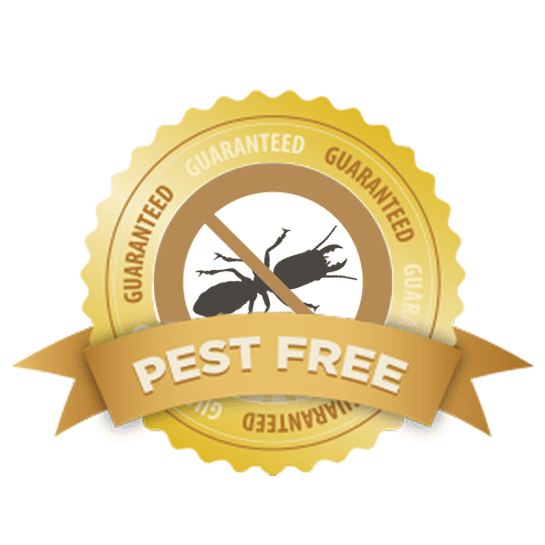A1 Bed Bug Exterminator Charlotte - Specialized Bed Bug Removal
Wiki Article
Bed Insect Treatment Break Down: Comparing Chemical Vs. Non-Chemical Solutions
In the world of parasite control, especially when handling the relentless concern of bed insects, the option between chemical and non-chemical therapy services can be a pivotal one. Both approaches provide unique advantages and disadvantages, influencing elements such as efficiency, safety and security considerations, and general price. By taking a look at the nuanced information of each method, a more clear understanding of which course to pursue in dealing with a bed insect problem can be achieved.Efficiency of Chemical Treatments
Chemical therapies for bed insect invasions have actually been extensively identified for their potent and quick efficiency in eradicating these parasites. When thinking about the effectiveness of chemical treatments, it is critical to recognize that they can offer a thorough and quick remedy to a bed insect trouble.Moreover, chemical therapies have the benefit of using residual effects, indicating that they can remain to get rid of bed insects also after the initial application. This residual activity is especially beneficial in combating any kind of potential re-infestations. Furthermore, the fast action of chemical treatments can bring relief to people encountering severe bed bug invasions, permitting them to gain back control of their living rooms promptly.
Safety Interest In Chemical Solutions
One crucial facet that needs cautious factor to consider when making use of chemical services for bed bug treatment is making sure the safety of owners and the setting. Exposure to particular chemicals used in bed insect treatments can lead to respiratory system concerns, skin irritation, or various other unfavorable reactions, particularly in individuals with pre-existing problems or sensitivities.In addition, the ecological influence of chemical remedies is another significant consideration. Some chemicals made use of in bed insect treatments might be harmful to advantageous insects, wild animals, and environments if they leach right into the dirt or water supply. It is important to make use of chemical treatments sensibly, following safety and security standards, and considering less toxic choices to reduce these risks and ensure the risk-free and reliable administration of bed pest problems.
Advantages of Non-Chemical Techniques
Thinking about the potential security concerns and ecological influence associated with chemical remedies for bed pest therapy, exploring non-chemical methods provides an encouraging option with several distinctive benefits. Non-chemical treatments are eco pleasant, as they do not contribute to air or water pollution, making them a sustainable option for bug control.Additionally, non-chemical remedies can be efficient in targeting bed pests, consisting of hard-to-reach areas where chemical treatments might not penetrate - A1 exterminators charlotte nc. Techniques such as warm therapy, vacuuming, steam cleansing, and mattress encasements supply detailed elimination without the use of dangerous chemicals.
Limitations of Non-Chemical Treatments

Furthermore, non-chemical therapies frequently call for several applications to achieve successful elimination. This can be time-consuming and might not always guarantee complete elimination of all bed bugs and their eggs, especially in hidden or hard-to-reach areas.
Moreover, the success of non-chemical treatments greatly depends on proper implementation and thoroughness, which can be testing for individuals without professional competence. Insufficient application of non-chemical methods may lead to insufficient obliteration, resulting in consistent infestations and the demand for extra treatments.
Therefore, while non-chemical treatments have their advantages, it is important to recognize these limitations and consider them when establishing the most efficient approach for handling bed bug infestations.
Price Contrast: Chemical Vs. Non-Chemical Options
Offered the constraints associated with non-chemical treatments, a necessary facet to assess in the context of bed insect monitoring is the expense contrast between chemical and non-chemical options. In comparison, non-chemical treatments like warmth therapy or steam can be much more costly, with costs ranging from $1,000 to $6,000 for an entire home. While the first expense of chemical therapies might appear reduced, multiple therapies might be called for to fully get rid of the problem, potentially increasing the overall expense.Conclusion

Taking into consideration the potential safety and security issues and ecological effect linked with chemical remedies for bed bug treatment, exploring non-chemical strategies provides a promising option with numerous distinctive advantages.Offered the constraints associated with non-chemical treatments, a crucial aspect to evaluate in the context of bed pest management is the expense contrast in between chemical and non-chemical alternatives. In contrast, non-chemical treatments like warmth treatment or steam can be a lot more costly, with costs ranging from $1,000 to $6,000 for an entire home. While the preliminary expense of chemical therapies might seem lower, several treatments might be required to fully remove the invasion, possibly enhancing the total expense.In final thought, when comparing chemical and non-chemical bed insect treatment options, it is important to think about efficiency, security, advantages, constraints, and price.
Report this wiki page